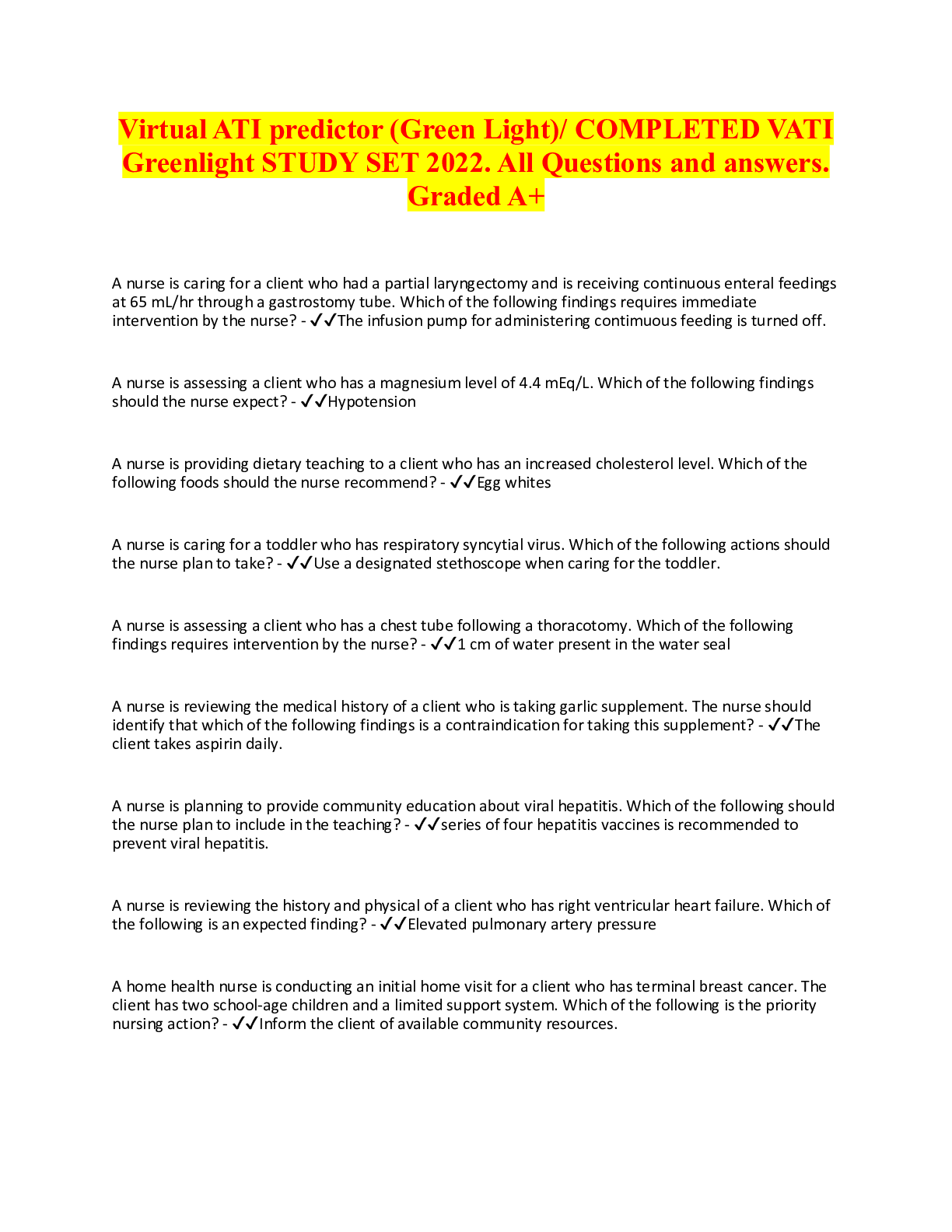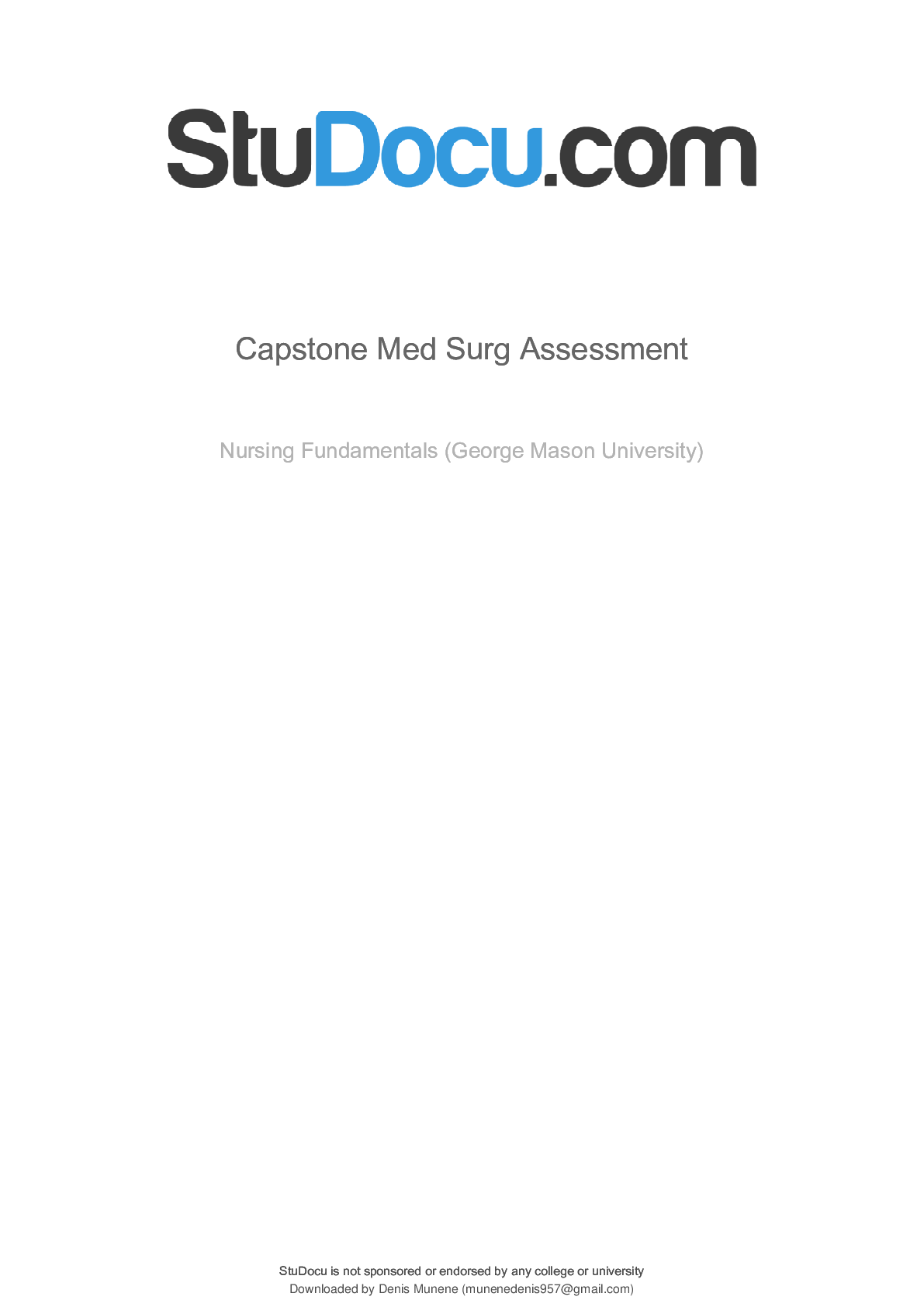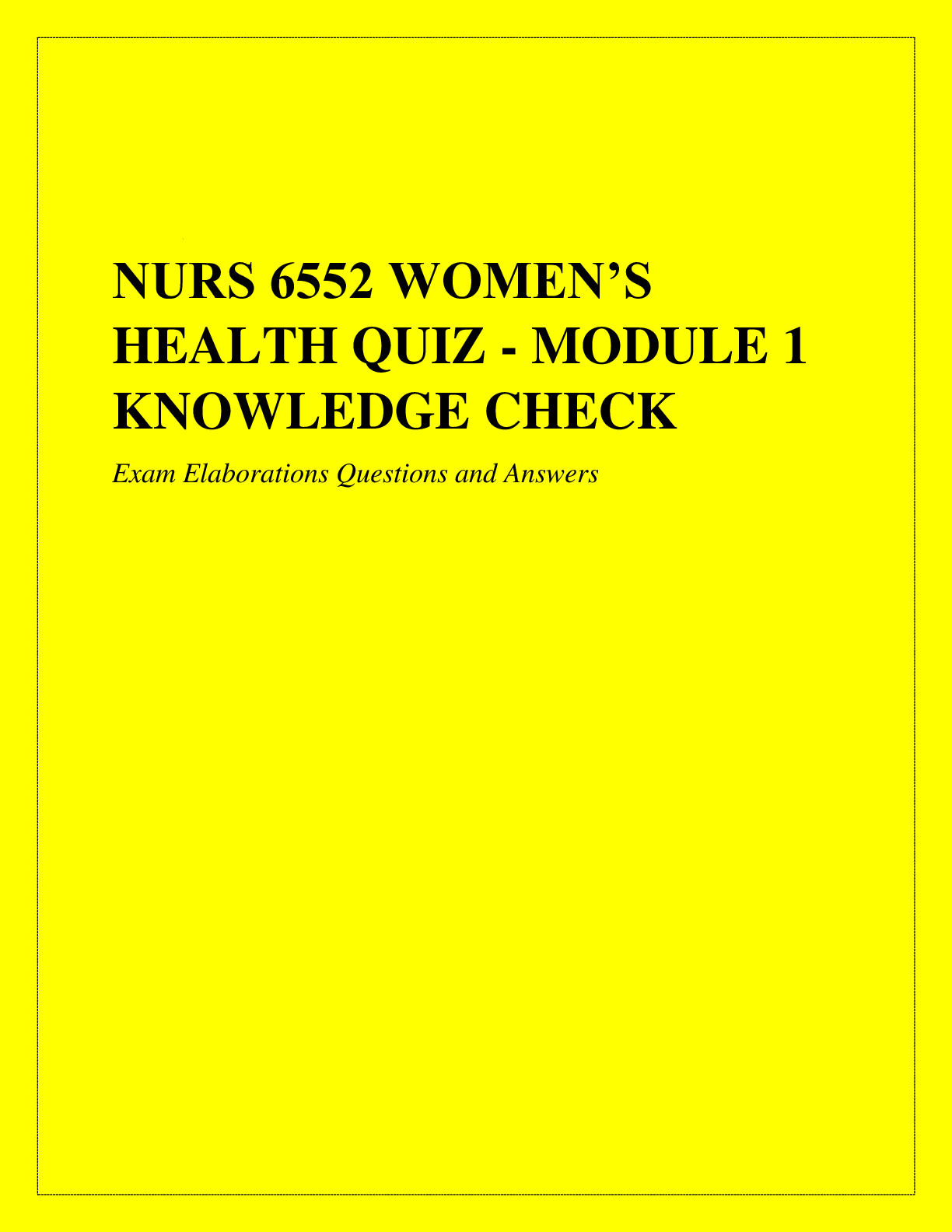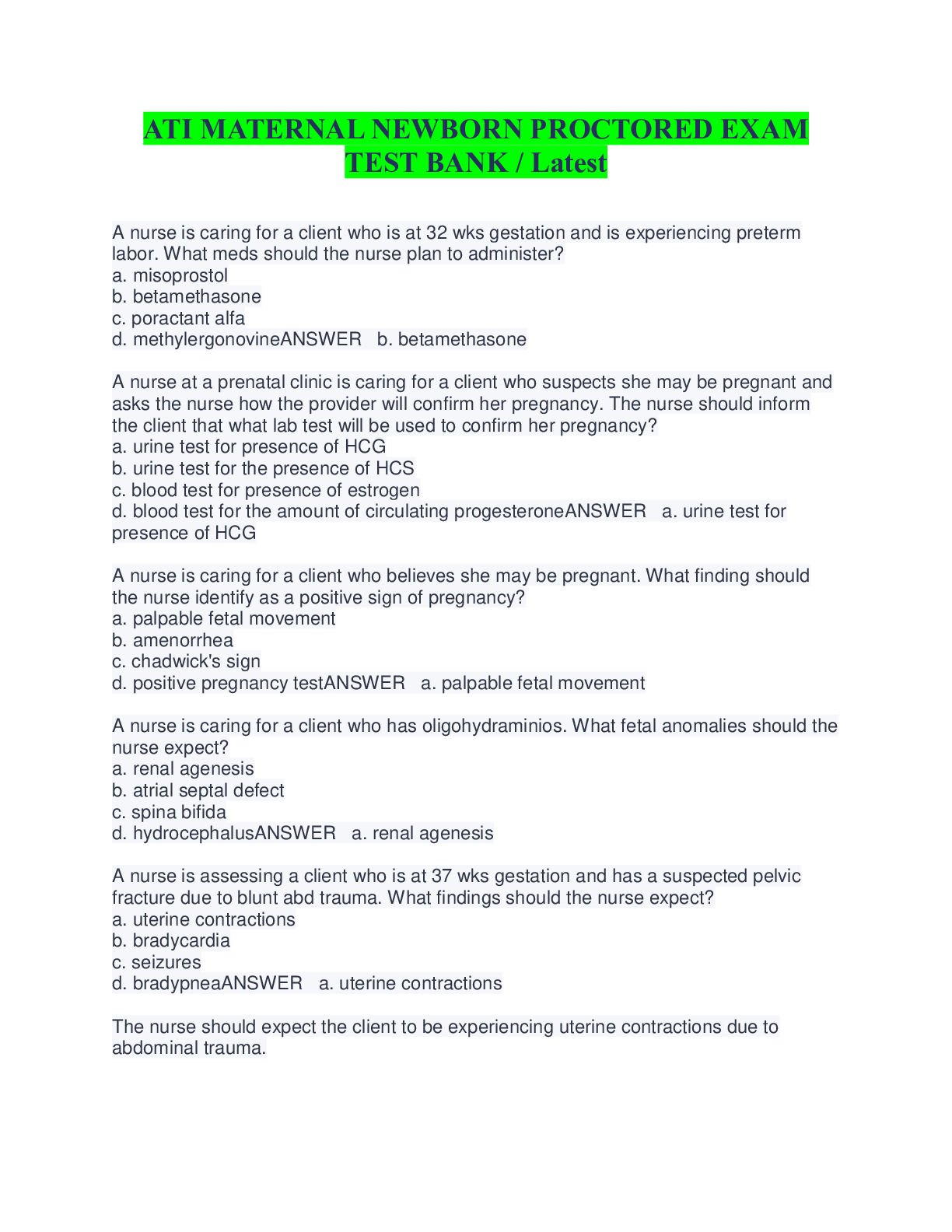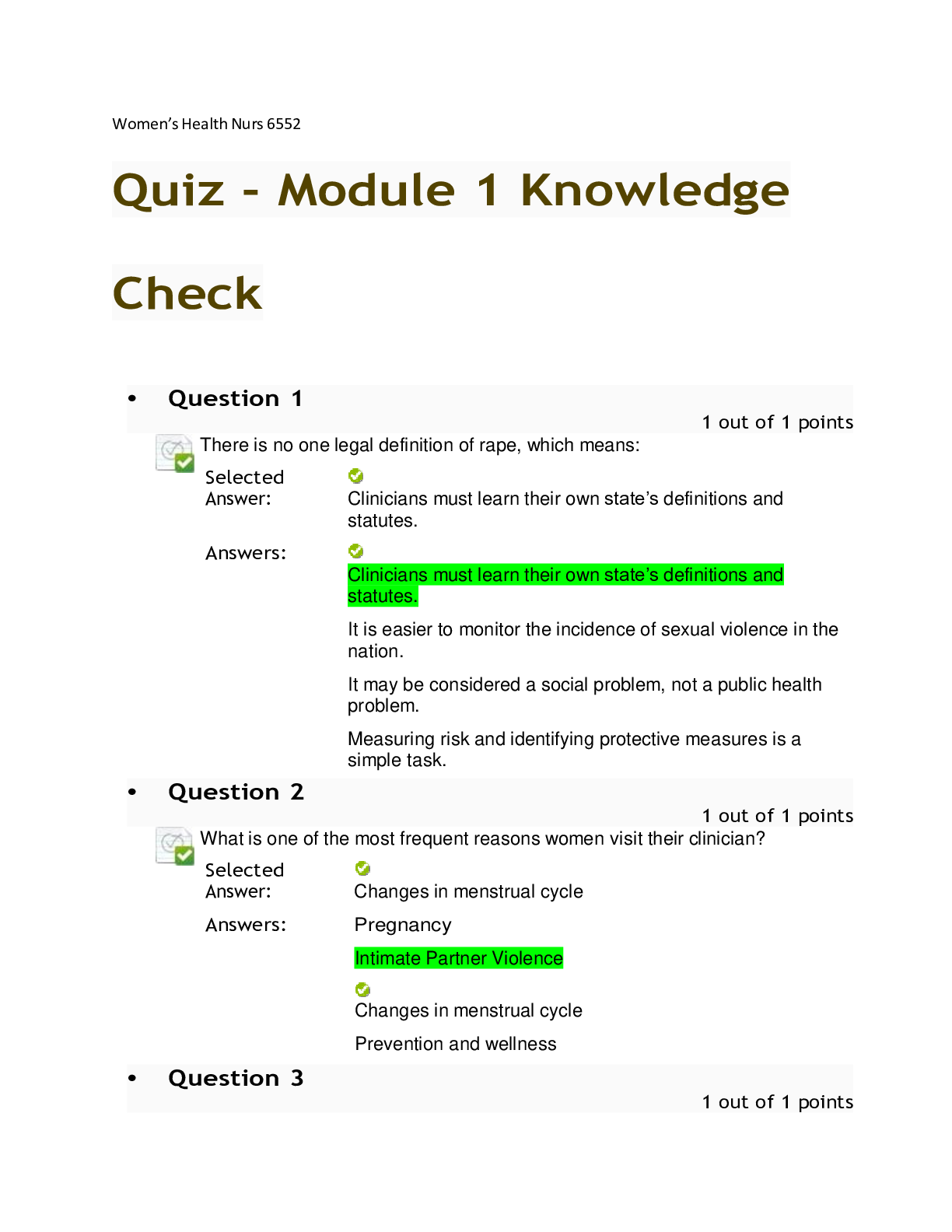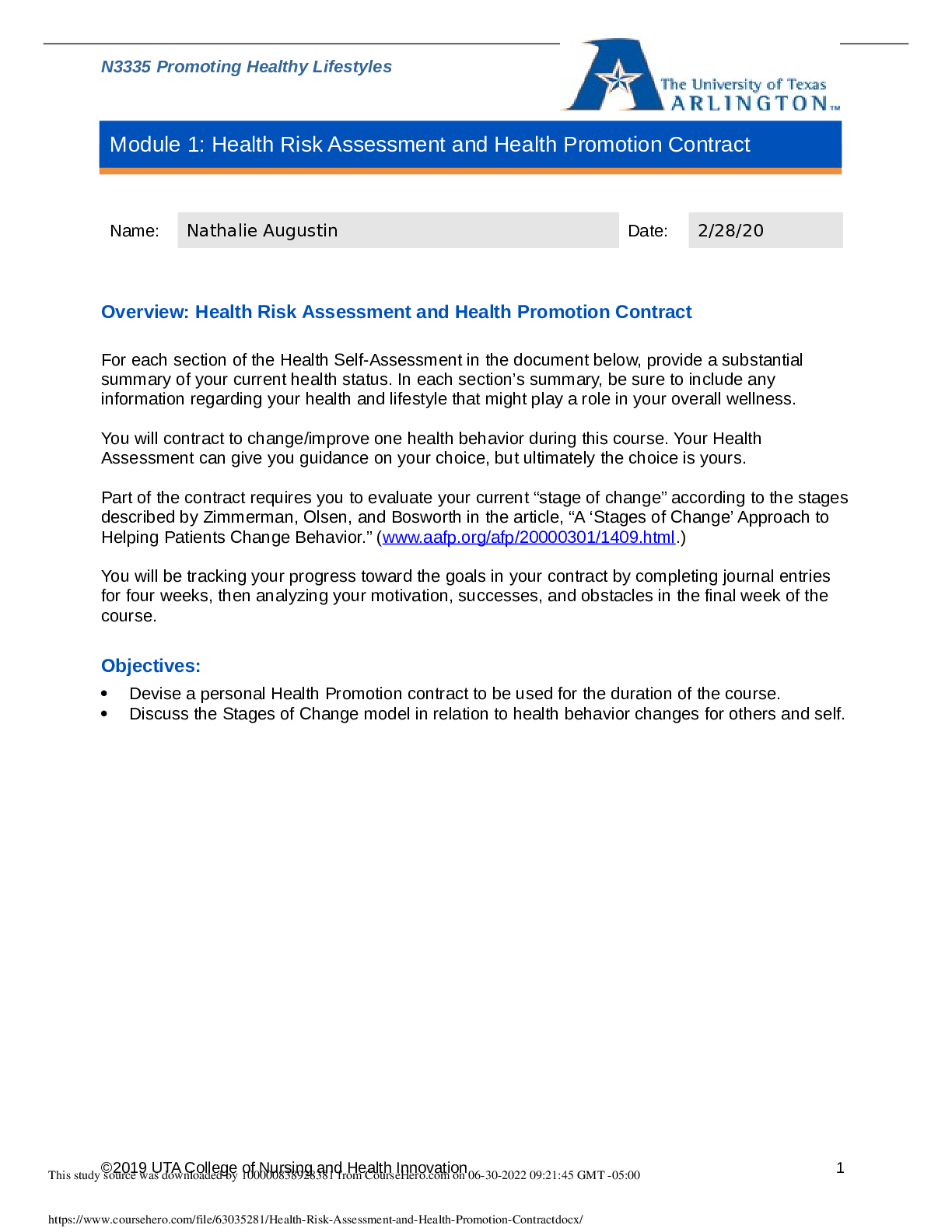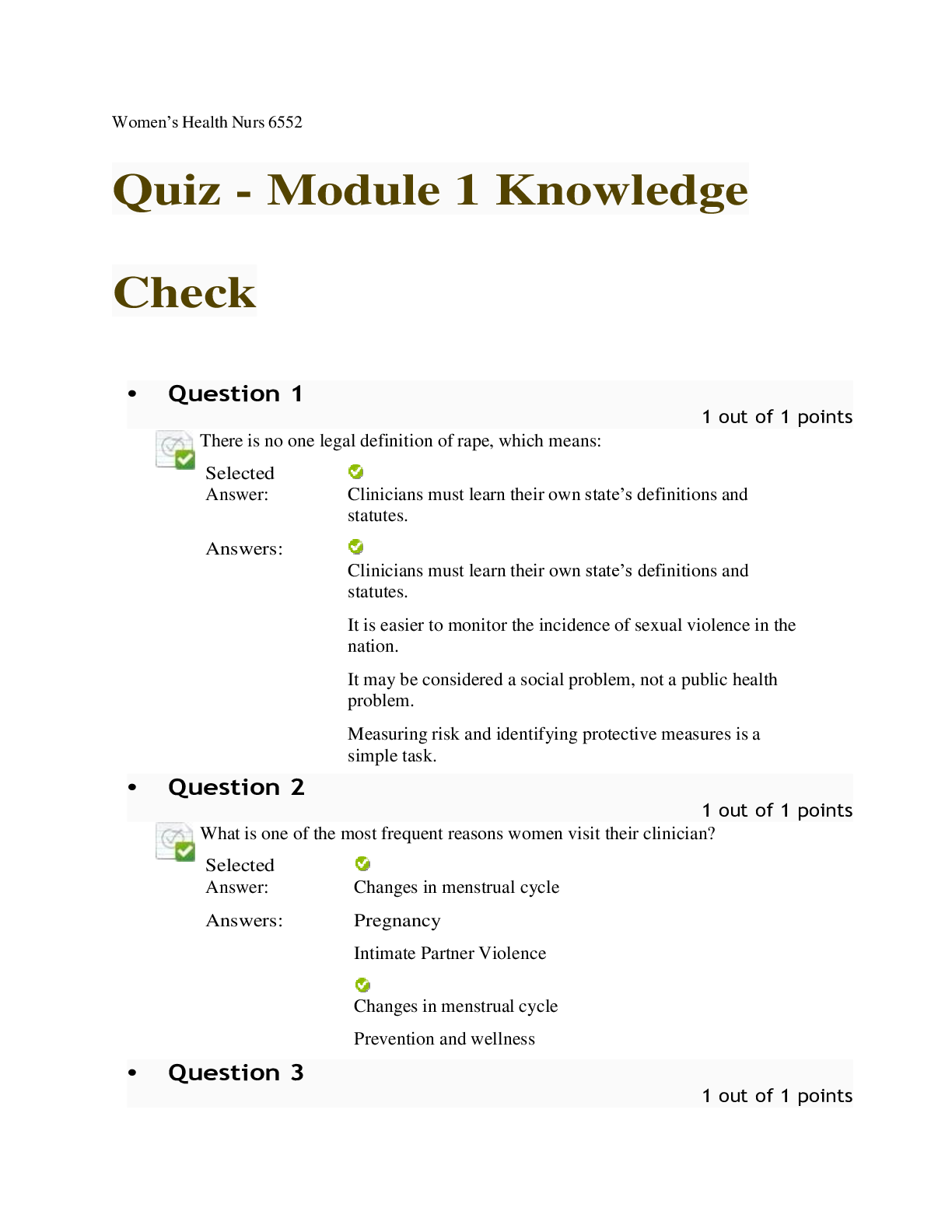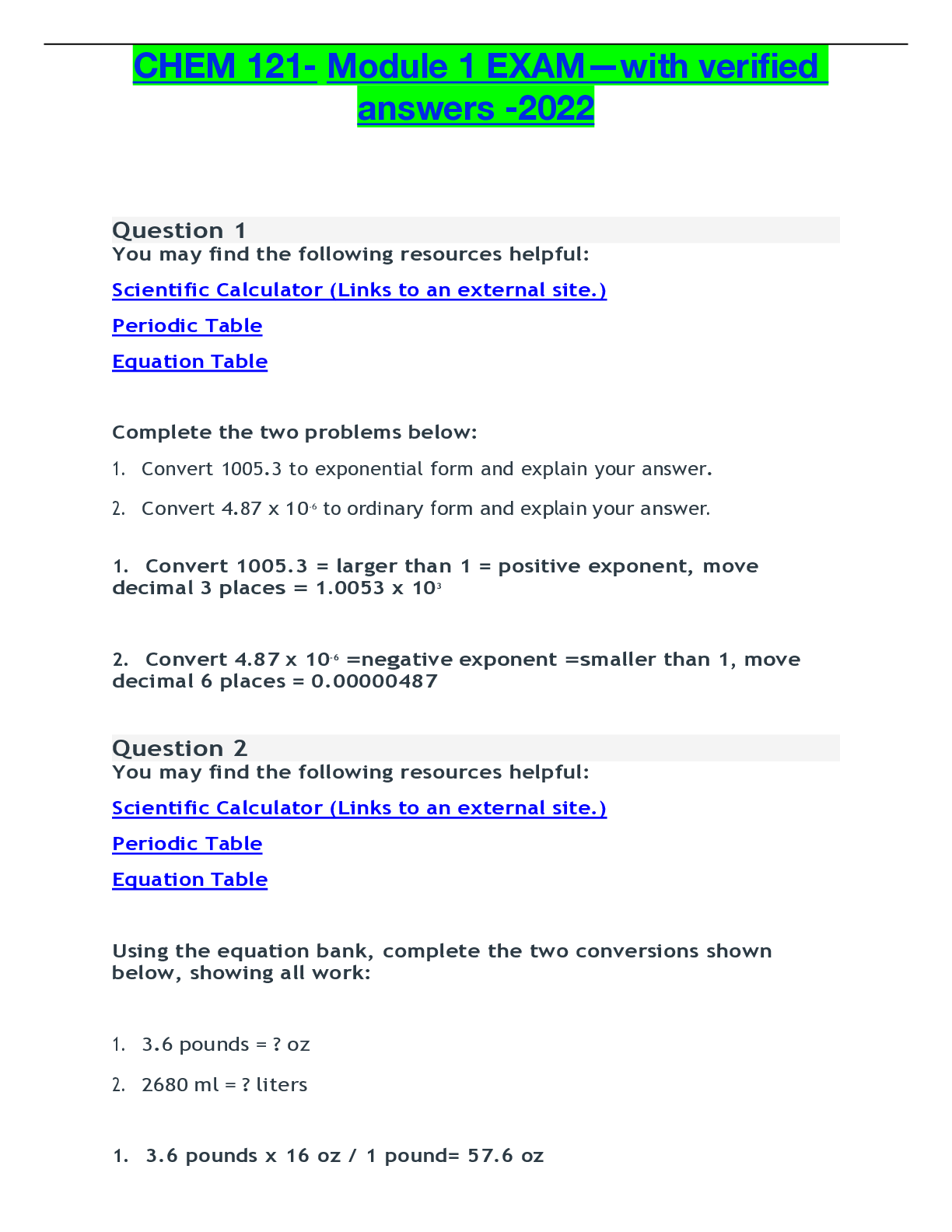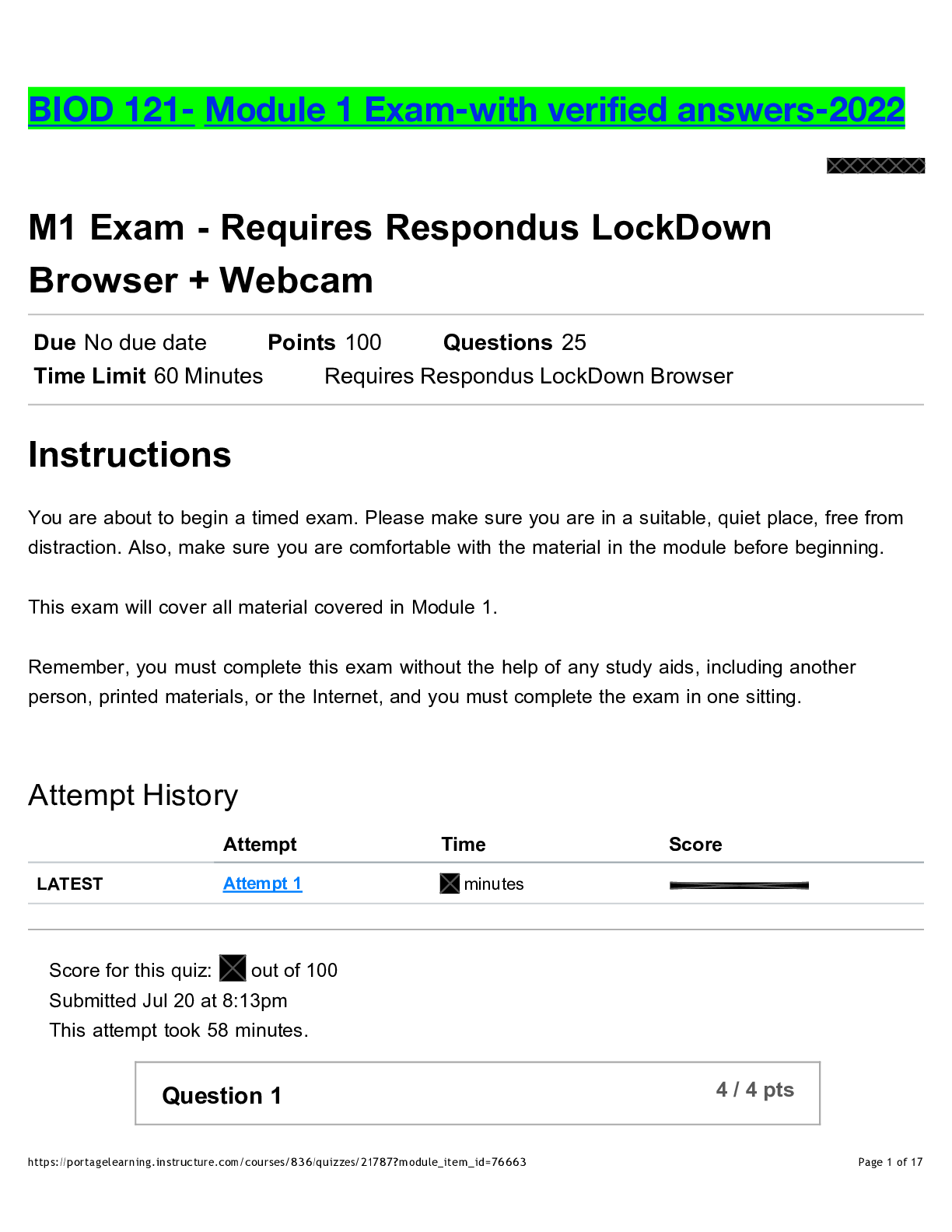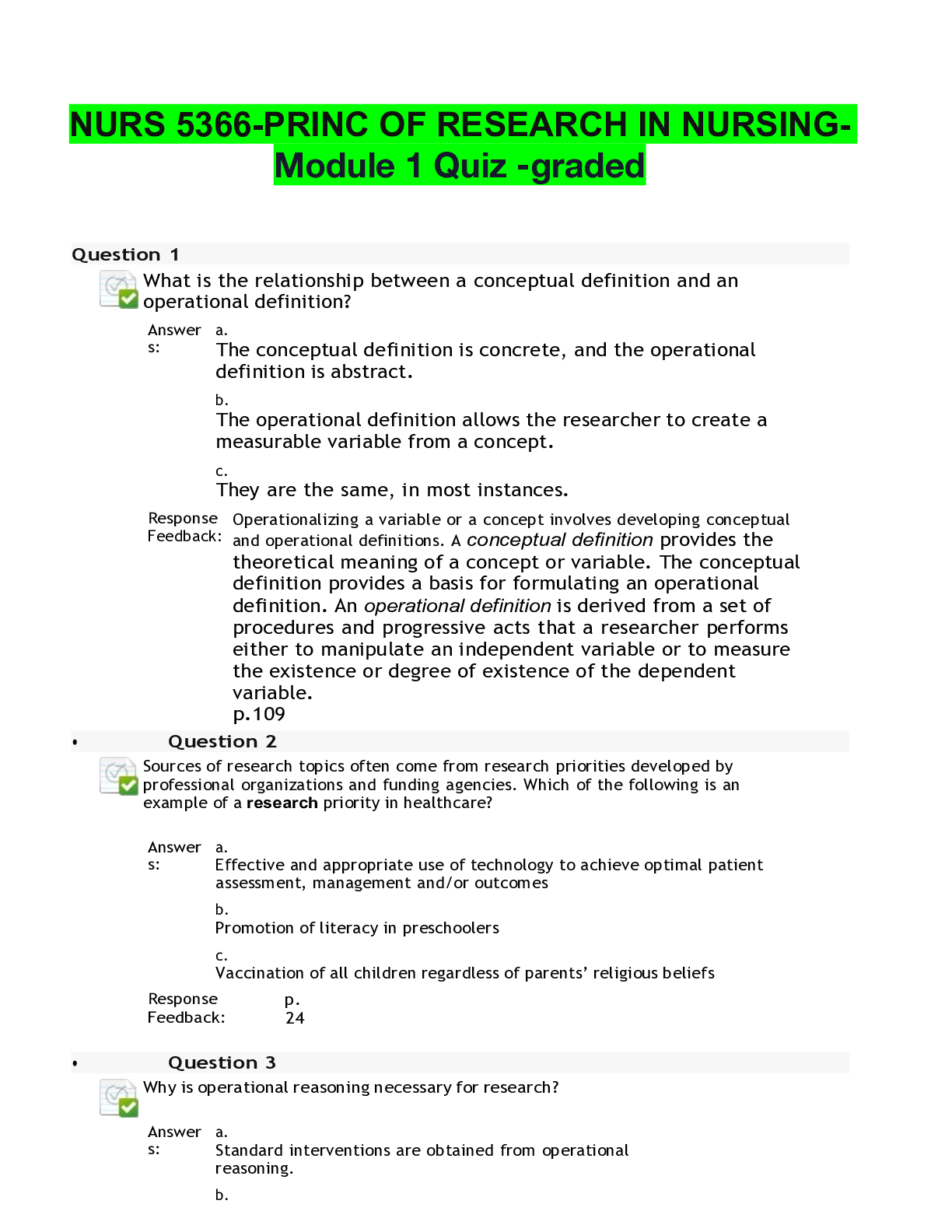Health Care > EXAM > Pathophysiology 01 - Module 1 - Stress and Adaptation module 1-4 MODULE 1: STRESS AND ADAPTATION (All)
Pathophysiology 01 - Module 1 - Stress and Adaptation module 1-4 MODULE 1: STRESS AND ADAPTATION
Document Content and Description Below
MODULE 1: STRESS AND ADAPTATION “A state manifested by a specific syndrome of the body, developed in a response to any stimuli that made an intense systemic demand on it” (Selye, 1956) “A p... erson experiences stress when a demand exceeds a person’s coping abilities, resulting in reactions such as disturbances of cognition, emotion, and behaviour that can adversely affect well-being” (McCance & Huether 2006) Review of the Adrenal Gland: There are three main layers of the adrenal gland 1. Capsule: Tough fiberous capsule enclosed in fat for protection 2. Adrenal cortex (80-90% of gland): has three zones and secretes three types of steroid hormones (synthesized from acetate & cholesterol): glucocorticoids, mineralcorticoids and adrenal androgens. 3. Adrenal medulla (10-20% of gland): contains nervous tissue which is part of the sympathetic nervous system and secretes Epi and NE Adrenal Cortex There are three layers of the adrenal 1. Zona glomerulosa: - Outer most layer of the adrenal cortex - Produces primarily aldosterone (95% of minero-corticoid produced is in this form) 2. Zona fasciculate - Middle layer of the adrenal cortex - Produces primarily cortisol (95% of glucocorticoids), cortisone and corticosterone 3. Zona reticularis: - Inner most layer - Adrenal androgens (i.e. gonadocorticoids) are made here Downloaded by Denis Munene ([email protected]) lOMoARcPSD|16310140 NURSING 2PF3 Module 1: Stress and Adaptation 2 There are three types of adrenal cortical hormones: 1. Mineral corticoids Aldosterone - Synthesized by: the zona glomerulosa - Release is regulated by: the renin-angiotensin mechanism and by blood levels of potassium - Circulates: mostly bound to albumin - Main effects: Sodium retention by the distal tubules of the kidney while increasing urinary losses of potassium Regulation of volume and blood pressure control (renin-angiotensin pathway) Facilitates the excretion of hydrogen ions role in pH balance - Excessive aldosterone (aldosteronism [usually related to neoplasms]): Increased sodium and water retention hypernatremia hypertension, increased blood pressure, and edema; Increased potassium excretion hypokalemia arrhythmias, muscle weakness and paralysis (potassium is important for muscle contraction and membrane depolarization) - Insufficient aldosterone: Increased sodium and water excretion hyponatremia hypotension, dehydration Increased potassium retention hyperkalemia again, there will be dysfunction of muscle contraction (including the heart and GI) which may cause arrhythmia and potential weight loss 2. Glucocorticoids Cortisol: - Synthesized by: the zona fasciculate and zona reticulari [Show More]
Last updated: 1 year ago
Preview 1 out of 53 pages

Reviews( 0 )
Document information
Connected school, study & course
About the document
Uploaded On
Sep 03, 2022
Number of pages
53
Written in
Additional information
This document has been written for:
Uploaded
Sep 03, 2022
Downloads
0
Views
37

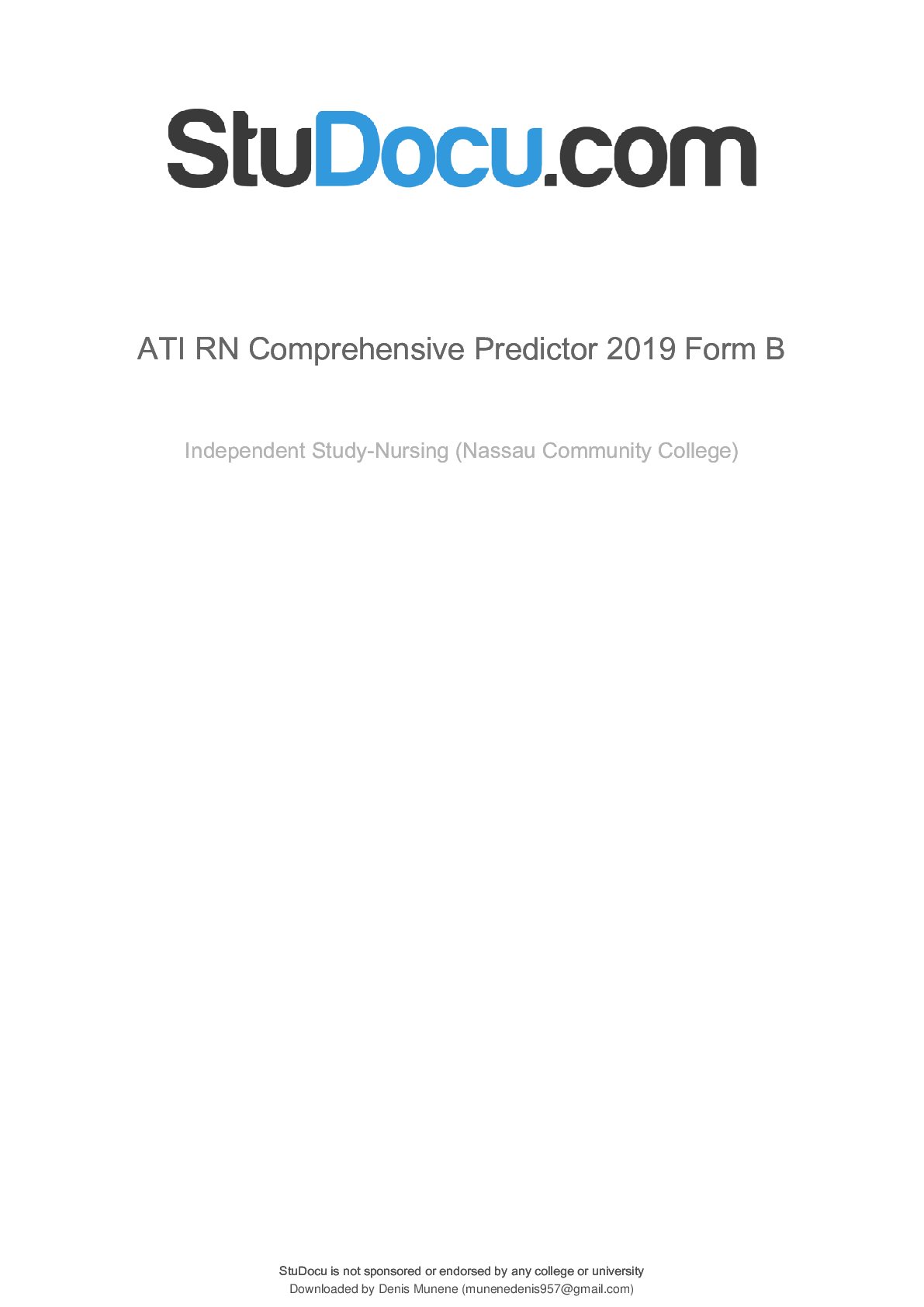
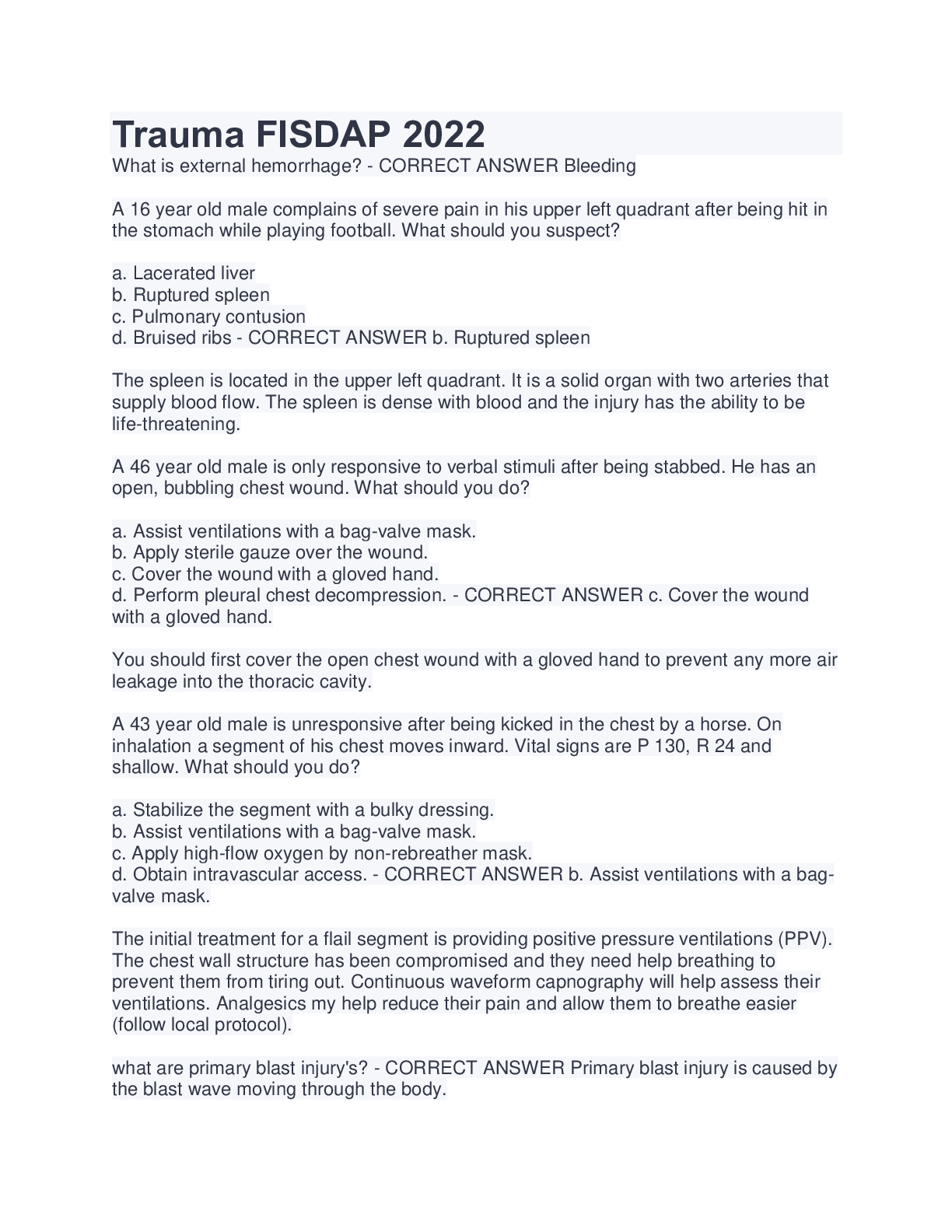
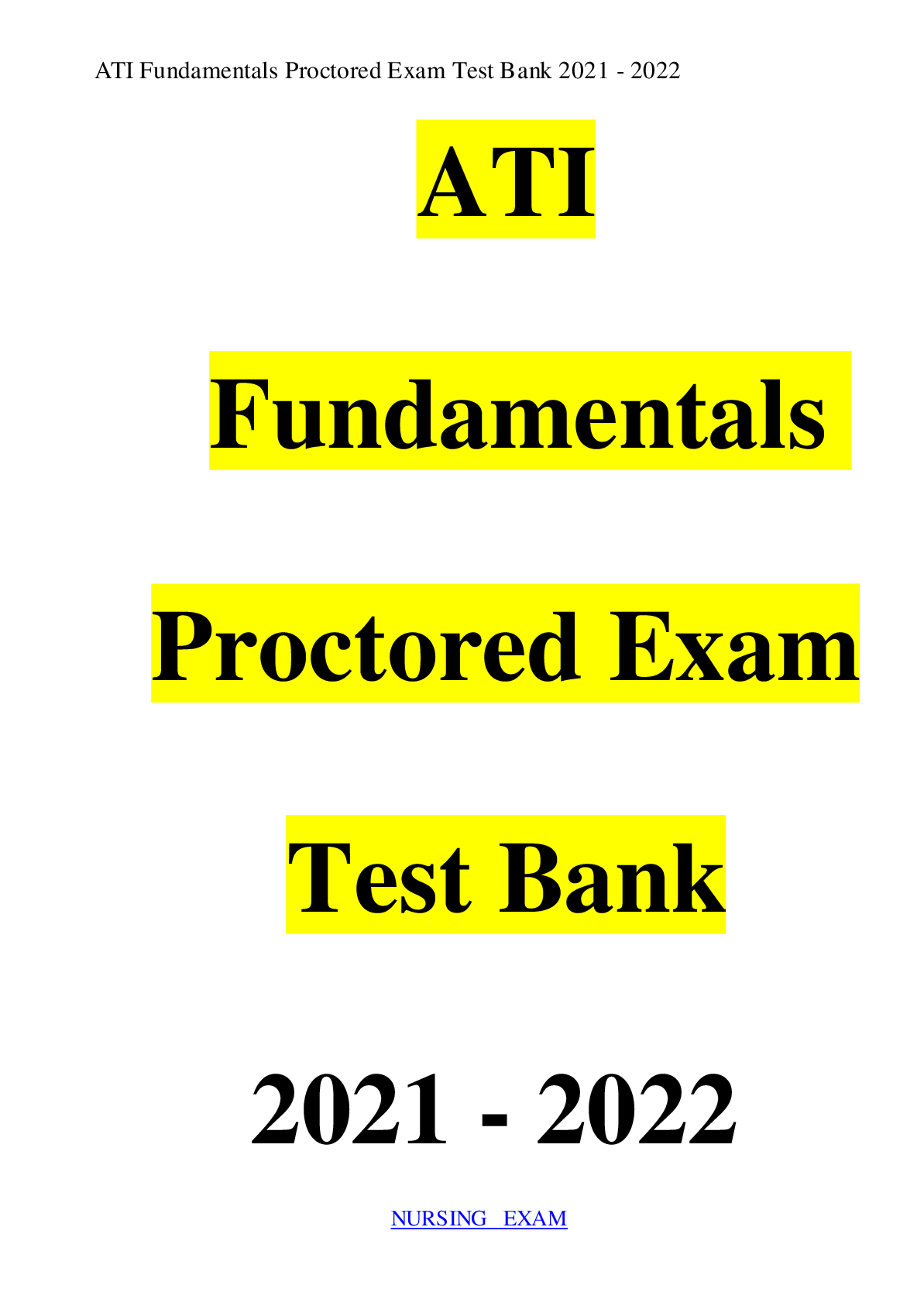
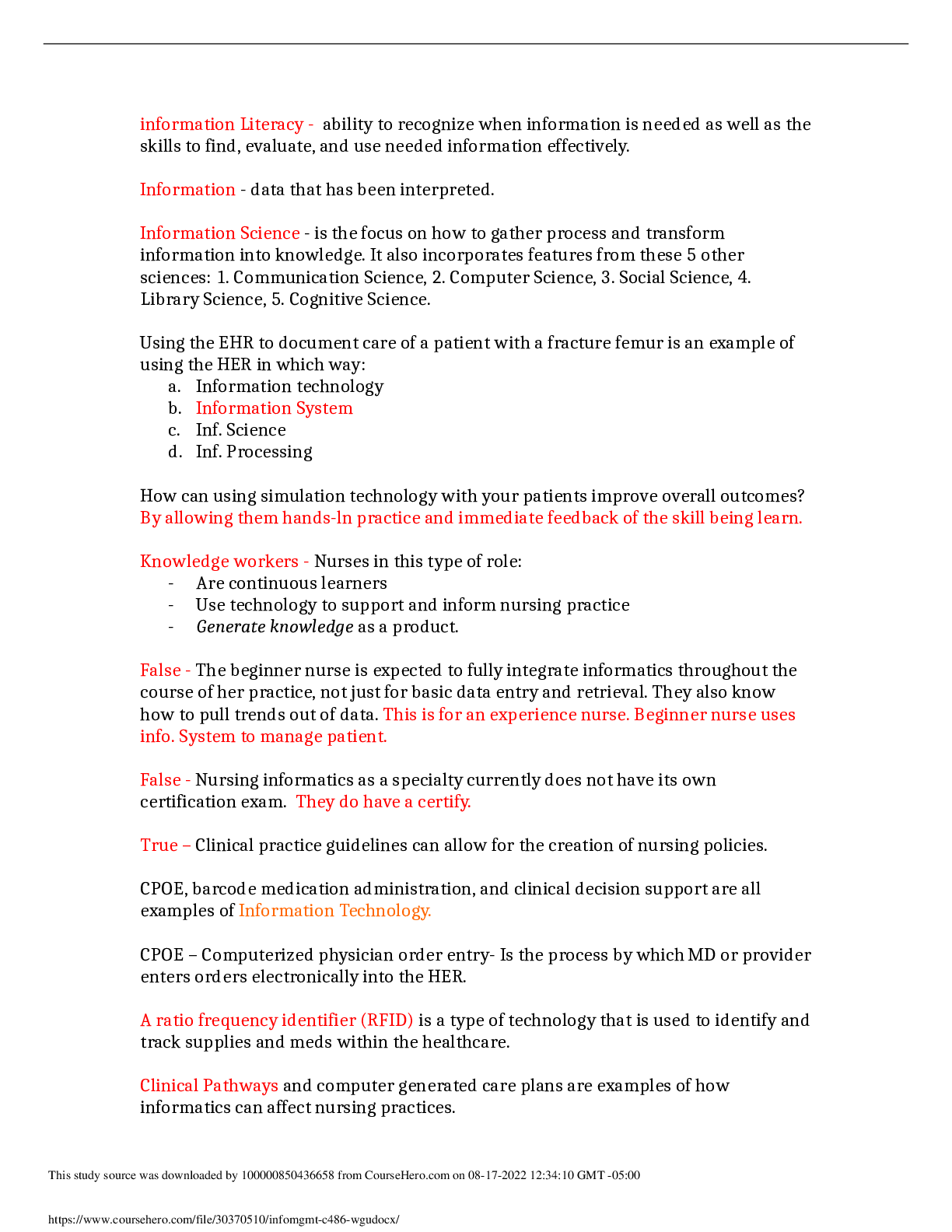
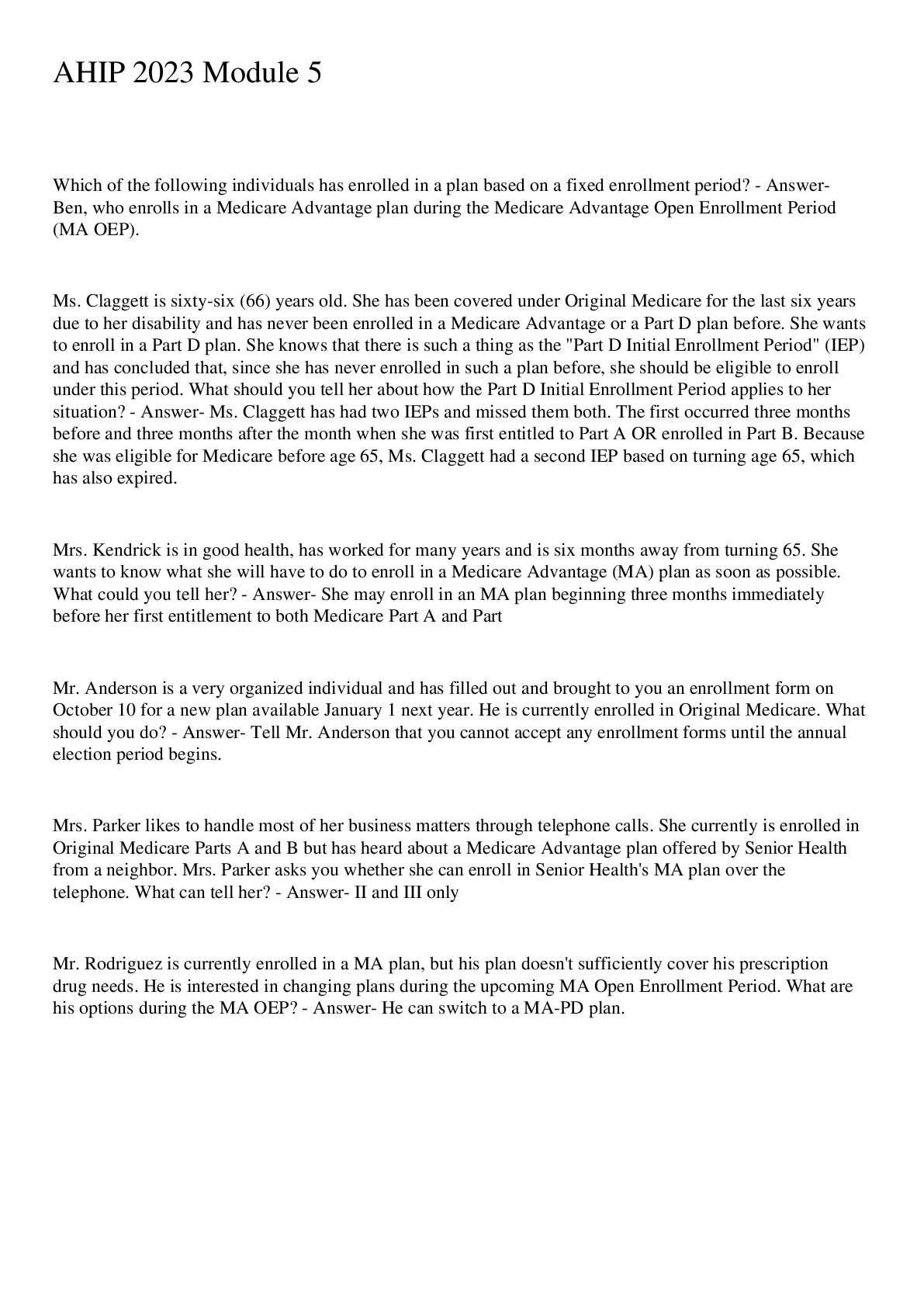
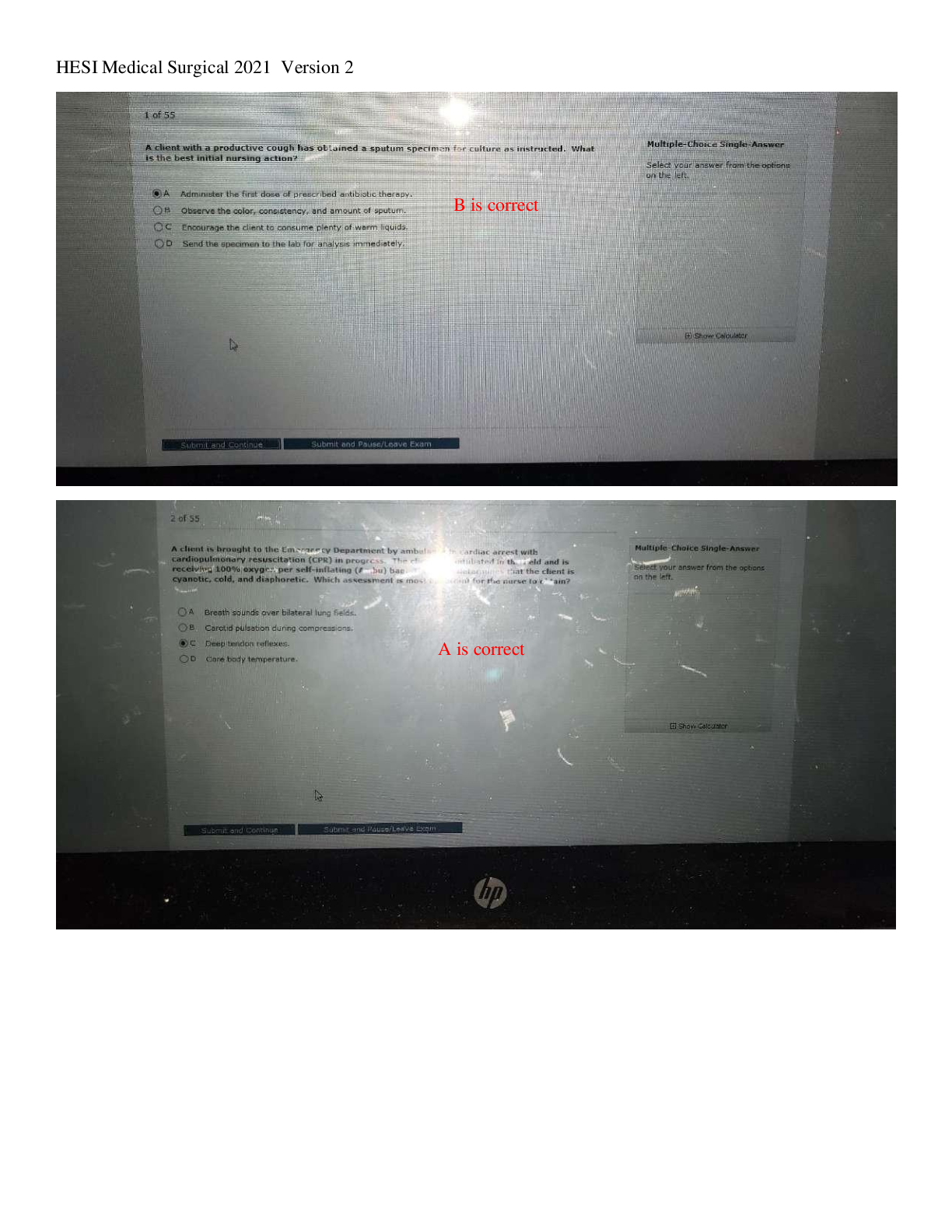

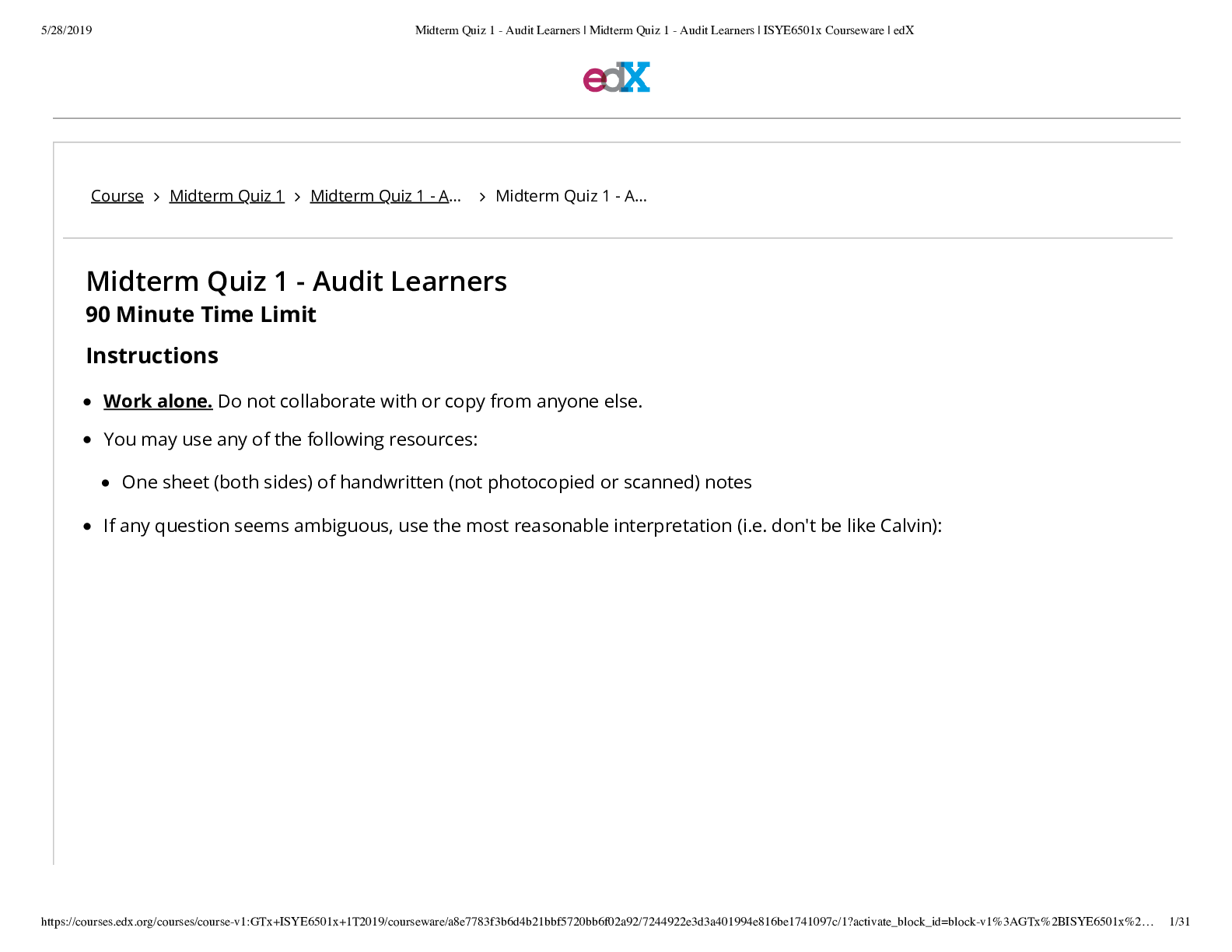
.png)


